| Name | Meyerding Retractor |
| Lead Time | 0-3 days |
| Specialty | General Instruments-Hooks & Retractors – Retractors |
| Material Finish | Stainless Steel |
| Grade | Premium Operating Room |
| Units of Measurement | Each |
| Manufacturer | Lexis Industry |
| Sterility | Non-Sterile |
| Usage | Reusable |
Meyerding Retractor
Meyerding Retractor
toothed edge
Meyerding Retractor includes a curved blade with a toothed edge most commonly used in orthopedic surgeries in order to hold back, or retract, larger muscles. The thick handle of this instrument has a small hook that curves upward in order for the surgeon to have a better grip.
SKU:
CS-01-556
Category: Hooks & Retractors
Description
Reviews (0)
Be the first to review “Meyerding Retractor” Cancel reply
Shipping & Delivery
Related products
Balfour Standard Center Blade – For Fixed System
For balfour retractor systems w/ fixed side blades
Balfour Supra-Pubic Center Blade is available in different sizes to accommodate different surgical procedures and patients. The blade is curved and has lips around the edges to assist in operations such as a Suprapubic Cystostomy. This center blade may also be detached when used with the Balfour Retractor Systems.
Davis Retractor
Double-ended, 5.0 mm x 16.0 mm & 8.0 mm x 21.0 mm blades, 5-1/2" (14.0 cm)
Davis Retractor is a stainless steel instrument that is double-ended and has opposing blades on either end. This retractor is able to divide and keep edges of an incision open. This instrument is also protected by the Lexis Industry manufacturer warranty on defects in materials and workmanship.
Alm Retractor
Alm Retractor
4x4 prongs
Alm Retractor is a device used during general surgical procedures that involve retracting tissue in small areas of the body. This retractor features 4x4 prongs that are available in sharp or blunt points depending on the type of tissue being held. The instrument is also self-retaining due to a mechanism that allows the surgeon to keep it in a desired place once it has been inserted.
Cushing Vein Retractor
Cushing Vein Retractor
Cushing Vein Retractor has a sharply curved blade and is a popular retractor used during neurosurgery or as rib spreaders. In this way, the ribs or the tissues that are held can be pulled and kept away from the surgical area. Depending on the situation, this instrument is available in different lengths and widths.
Deaver Retractor – Flat Handle
Deaver Retractor - Flat Handle
flat handle, flexible
Deaver Retractor with a flat handle contains a flexible curved blade that is offered in two different widths and lengths depending on the surgical requirements. During general operations, specifically the involvement of the abdominal or chest cavity, this retractor can allow the surgeon to move one side of the incision to access the area that needs attention. If a deeper section needs to be accessed, the longer and wider blade may be more beneficial.
Balfour-Baby Pediatric Abdominal Retractor
Balfour-Baby Pediatric Abdominal Retractor
Balfour-Baby Pediatric Abdominal Retractor has a maximum spread of 3 ½," which is ideal for smaller patients, such as young children. This retractor system also includes fixed fenestrated side blades that help to spread open an incision and allow for adequate inspection of the abdominal cavity.
Abdominal Retractor W/ Fixed Side Blades – 2 1/2″ Deep
w/ fixed fenestrated side blades, 2-1/2" deep & center blade #2470-72 (3" x 2")
Balfour Abdominal Retractor with Fixed Side Blades incorporates 2 ½" deep fenestrated side blades that are attached onto the center blade, which is 3" wide x 2" deep. Two different sizes of this retractor are offered according to the maximum spread they provide. The side blades of this particular retractor can be pushed and held away from each other to open up an incision in the abdominal cavity.
Cope Retractor
Double-ended, 6.0 mm & 11.0 mm, 7-1/8" (18.0 cm)
Cope Retractor is a double-ended surgical instrument primarily used to pull back skin or organs that may obstruct the operating area. The main features of this retractor are its different shaped blades. For example, one end contains a strongly curved blade with a lip. The other end, however, contains a sharp, right angle blade with a ridge on the tip.




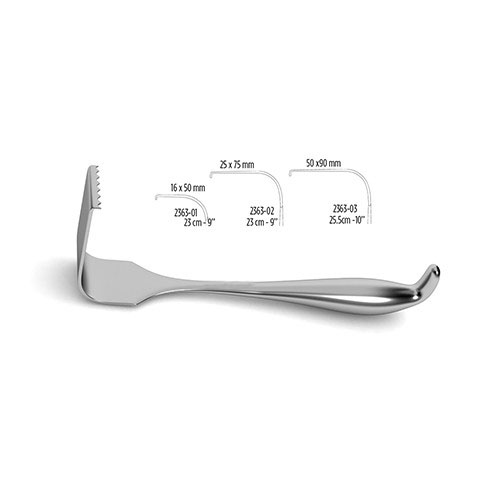
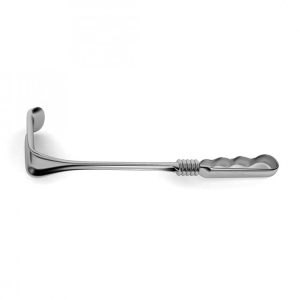
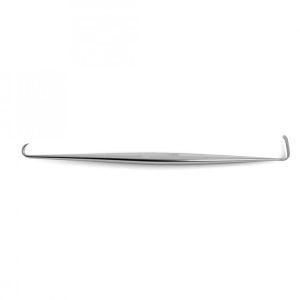
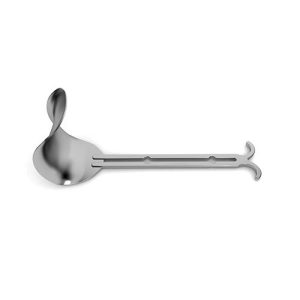
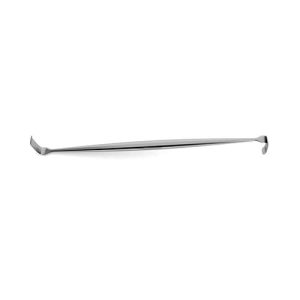
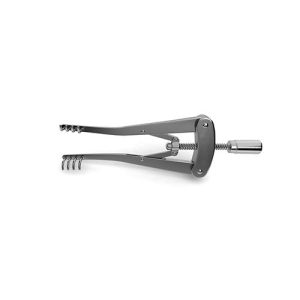
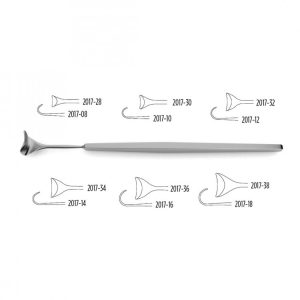

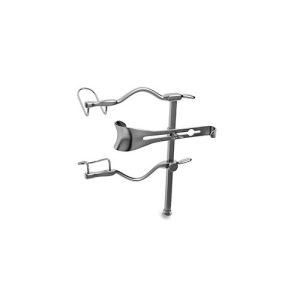



Reviews
There are no reviews yet.